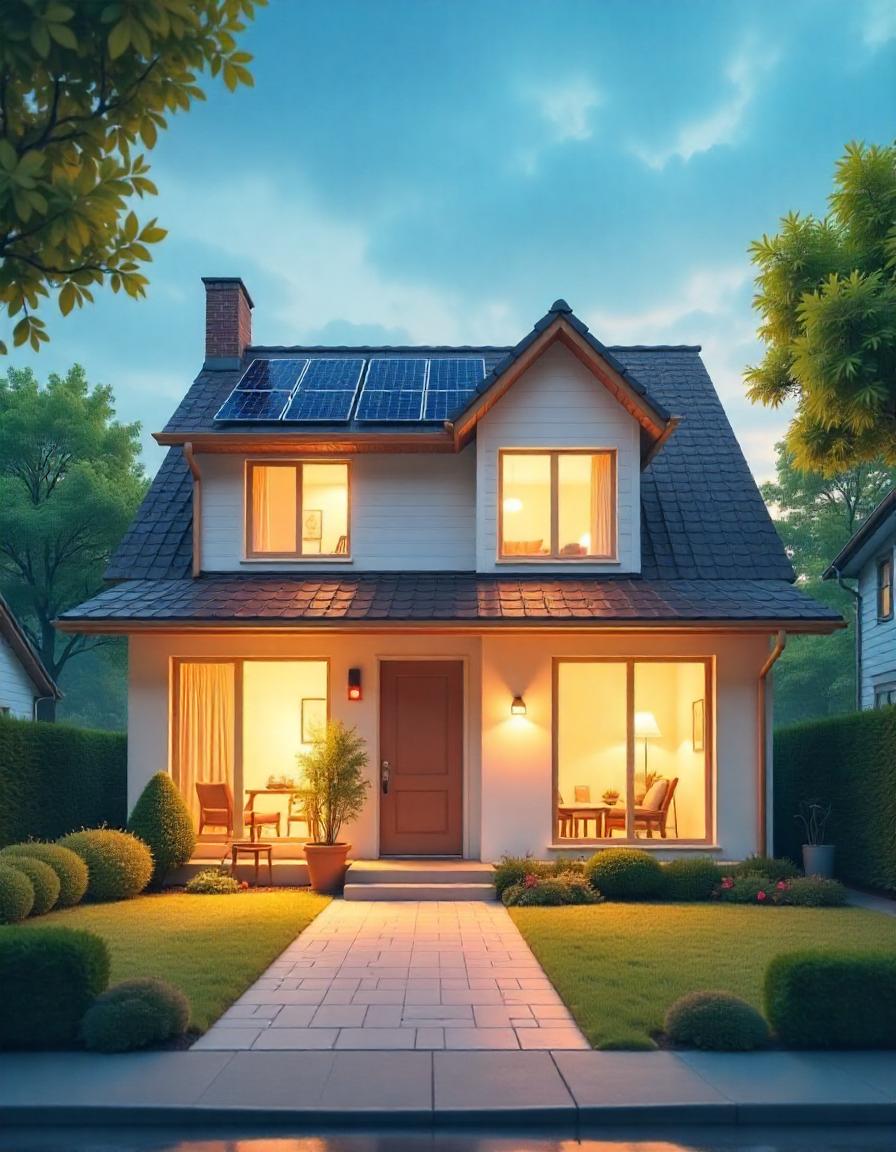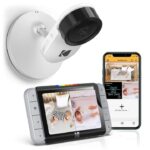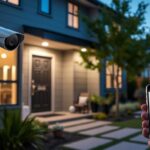Are you tired of high energy bills? Want to make your home smarter and more energy-efficient? This guide will show you simple ways to use automation to cut your energy use and save money. Recent studies show that home automation can reduce energy costs by 10-30% on average.
Contents
- 1 What is Home Energy Automation?
- 2 Benefits of Home Energy Automation
- 3 Understanding Your Home’s Energy Use
- 4 Key Areas for Energy Automation
- 5 Home Automation Platforms
- 6 Step-by-Step Implementation Guide
- 7 Cost vs Savings Breakdown
- 8 Common Problems and Solutions
- 9 Tips for Maximum Savings
- 10 Future of Home Energy Automation
- 11 Environmental Impact
- 12 Conclusion:
What is Home Energy Automation?
Home energy automation means using smart devices and systems to control your home’s energy use automatically. Instead of manually adjusting things like temperature and lights, these systems do it for you based on your schedule and preferences.
Benefits of Home Energy Automation
- Save money on utility bills
- Reduce environmental impact
- Increase home comfort
- Control everything from your phone
- Set it and forget it convenience
Understanding Your Home’s Energy Use
Before starting with automation, it’s important to know where your energy goes:
| Energy Use Category | Percentage of Total | Automation Potential |
|---|---|---|
| Heating/Cooling | 45% | Very High |
| Water Heating | 15% | Medium |
| Lighting | 15% | High |
| Appliances | 20% | Medium |
| Electronics | 5% | High |
Key Areas for Energy Automation
1. Smart Thermostats
Smart thermostats are the easiest way to start saving energy. They learn your schedule and adjust temperatures automatically. Here’s how much you can save with a smart thermostat:
| Traditional Thermostat | Smart Thermostat | Yearly Savings |
|---|---|---|
| $1,500 heating/cooling | $1,200 heating/cooling | $300 |
| Manual adjustments | Automatic scheduling | Time saved |
| Fixed temperatures | Smart learning | More comfort |
Tips for smart thermostat use:
- Set temperatures 7-10°F lower when sleeping or away
- Use scheduling features for consistent savings
- Connect to your phone for remote control
- Let the thermostat learn your patterns for 1-2 weeks
2. Smart Lighting Systems
Lighting can account for up to 15% of your electricity bill. Smart lighting automation helps by:
- Turning lights off automatically when rooms are empty
- Adjusting brightness based on natural light
- Setting schedules for indoor and outdoor lights
- Using motion sensors for security lighting
Average lighting cost comparison:
| Light Type | Monthly Cost | With Automation |
|---|---|---|
| Traditional | $30 | $18 |
| LED Only | $20 | $12 |
| LED + Smart | $20 | $10 |
3. Smart Plugs and Power Strips
Many devices use power even when turned off. This “vampire power” can add $100-200 to your yearly bill. Smart plugs help by:
- Shutting off power completely on a schedule
- Monitoring energy use of devices
- Controlling multiple devices at once
- Turning off forgotten devices automatically
Common vampire power costs:
- TV: $10/year
- Computer: $20/year
- Game console: $15/year
- Coffee maker: $7/year
4. Smart Window Coverings
Automated blinds and curtains can significantly impact heating and cooling costs:
- Open automatically to let in warming sunlight in winter
- Close during peak heat in summer
- Adjust based on room temperature
- Work with your smart thermostat
Potential savings: 11-20% on heating and cooling costs
5. Smart Home Energy Monitors
Whole-home energy monitors help you:
- Track energy use in real-time
- Identify energy-wasting appliances
- Set energy use goals
- Get alerts about unusual power consumption
6. Smart Water Heater Controllers
A new addition to home automation, smart water heater controllers can:
- Schedule hot water availability
- Adjust temperature based on usage
- Prevent energy waste during vacations
- Monitor for leaks and problems
Potential savings: 10-15% on water heating costs
Home Automation Platforms
Choosing the right platform is crucial for success:
| Platform | Pros | Cons | Best For |
|---|---|---|---|
| Apple HomeKit | Easy to use, secure | Limited device options | Apple users |
| Google Home | Wide compatibility | Requires internet | Budget conscious |
| Samsung SmartThings | Very flexible | More complex | Tech-savvy users |
| Amazon Alexa | Many devices | Privacy concerns | Voice control fans |
Step-by-Step Implementation Guide
- Start Small
- Begin with a smart thermostat
- Add 2-3 smart plugs
- Install smart bulbs in most-used rooms
- Create Basic Automations
- Morning routine (lights on, temperature up)
- Bedtime routine (lights off, temperature down)
- Away mode (everything off/reduced)
- Add More Devices
- Smart window coverings
- Additional smart lights
- Motion sensors
- Energy monitor
- Advanced Automation
- Connect devices to work together
- Set up weather-based adjustments
- Create seasonal routines
- Fine-tune Your System
- Review automation rules monthly
- Adjust schedules based on seasons
- Update device settings as needed
Cost vs Savings Breakdown
Initial Investment Costs:
- Smart Thermostat: $100-250
- Smart Bulbs: $15-50 each
- Smart Plugs: $15-30 each
- Window Automation: $100-300 per window
- Energy Monitor: $150-300
- Water Heater Controller: $150-200
Average Return on Investment Timeline:
| Investment Level | Cost | Annual Savings | Payback Time |
|---|---|---|---|
| Basic | $300 | $180 | 1.7 years |
| Medium | $800 | $400 | 2 years |
| Advanced | $2,000 | $800 | 2.5 years |
Common Problems and Solutions
- High Initial Costs
- Start with highest-impact devices first
- Look for rebates from utility companies
- Buy during sales seasons
- Complex Setup
- Use manufacturer apps for basic setup
- Join online communities for help
- Start with simpler devices
- Wi-Fi Issues
- Place router centrally
- Use Wi-Fi extenders if needed
- Choose devices with offline modes
- Family Resistance
- Start with non-disruptive automations
- Show energy savings reports
- Let family members control their rooms
- Keep manual controls available
Tips for Maximum Savings
- Regular Maintenance
- Update device firmware
- Clean sensors monthly
- Check automation schedules seasonally
- Use Data
- Review energy reports weekly
- Adjust based on usage patterns
- Compare months to find trends
- Seasonal Adjustments
- Update schedules for season changes
- Modify temperature targets
- Adjust lighting timers
Future of Home Energy Automation
The field is rapidly evolving with new technologies:
- AI-powered energy management
- Solar integration capabilities
- Battery storage automation
- Grid-responsive systems
- Predictive maintenance features
Environmental Impact
Energy automation doesn’t just save money – it helps the planet:
- Average CO2 reduction: 1,500 pounds/year
- Reduced peak energy demand
- Better integration with renewable energy
- Less waste from efficient usage
Conclusion:
Home energy automation is a smart investment that pays off in lower bills and better comfort. Start small, build up gradually, and let the savings grow. With proper setup, you can expect to cut your energy bills by 10-30% while making your home more comfortable and convenient.
Remember: The best automation system is one that fits your lifestyle and budget. Focus on the areas where you use the most energy first, and expand from there. With the right approach, you can create an efficient, comfortable, and environmentally friendly home that saves you money every month.



